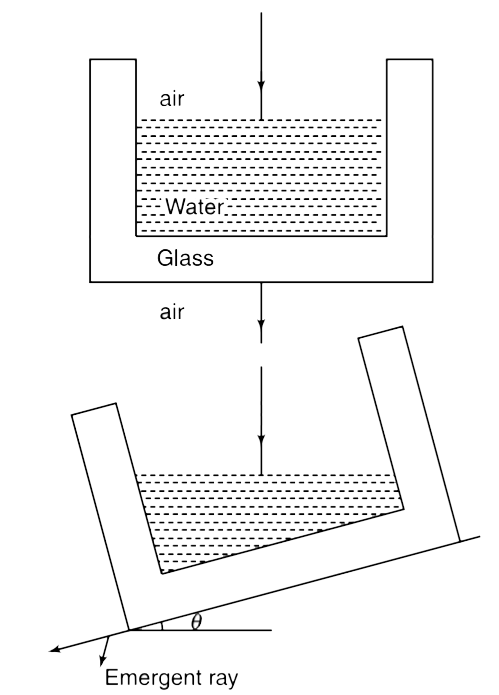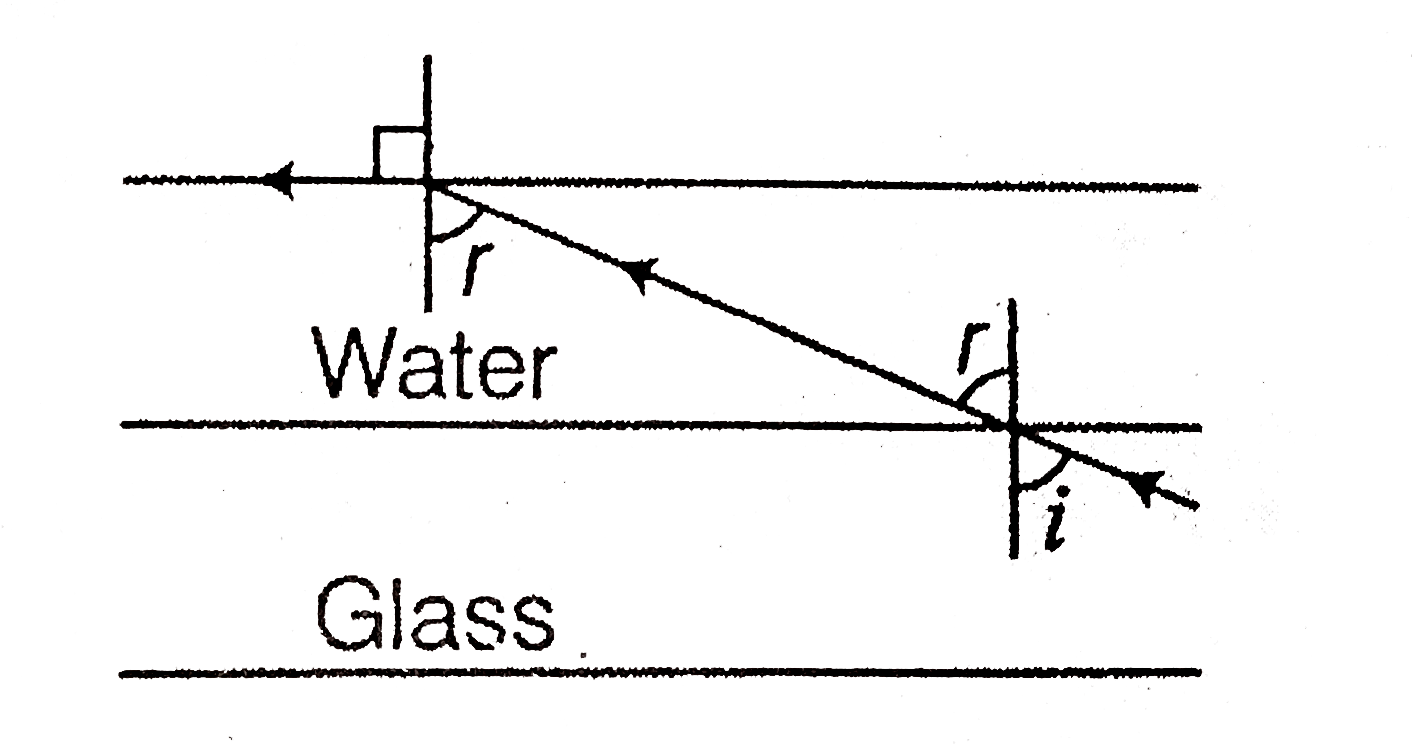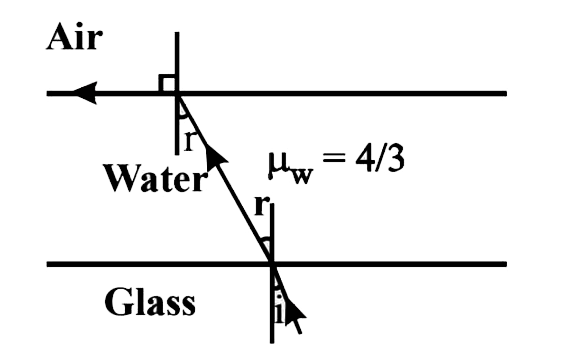Figure shows a glass (μg=1.5) vessel, partly filled with water (μw=43) . A ray of light is incident normally on the water surface and passes straight through. The vessel is tilted slowly till angle θ such that the light ray is emergent grazing the lower surface of the glass. Find θ.

The correct Answer is:θ=sin−1(34)
Step by step video, text & image solution for Figure shows a glass (mu_(g) = 1.5) vessel, partly filled with water ( mu_(w) = (4)/(3)) . A ray of light is incident normally on the water surface and passes straight through. The vessel is tilted slowly till angle theta such that the light ray is emergent grazing the lower surface of the glass. Find theta. by Physics experts to help you in doubts & scoring excellent marks in Class 12 exams.
Topper's Solved these Questions
- BOOK - ARIHANTCHAPTER - GEOMETRICAL OPTICSEXERCISE - Level 39videos
GEOMETRICAL OPTICS
- BOOK - ARIHANTCHAPTER - GEOMETRICAL OPTICSEXERCISE - Level 39videos
GEOMETRICAL OPTICS
- BOOK - ARIHANTCHAPTER - ELECTROSTATICSEXERCISE - Level 359videos
ELECTROSTATICS
- BOOK - ARIHANTCHAPTER - MAGNETIC EFFECT OF CURRENTEXERCISE - Magnetic effect of Current45videos
MAGNETIC EFFECT OF CURRENT
Similar Questions
A light ray is incident normally on the face AB of a right-angled prism ABC(μ==1.50) as shown in figure. What is the largest angle ϕ for which the light ray is totally reflected at the surface AC ?
 View Solution
View SolutionA ray of light is incident normally on one of the refracting surfaces of a prism of refracting angle A,. The emergent ray grazes the other refracting surface. Find the refractive index of the material ofprism.
View Solution
Knowledge Check
- Question 1 - Select One
A glass prism (μ=1.5) is dipped in water (μ=4/3) as shown in figure. A light ray is incident normally on the surface AB . It reaches the surface BC after totally reflected, if
 Asinθ≥8/9B2/3<sinθ<8/9Csinθ≤2/3DIt is not possible
Asinθ≥8/9B2/3<sinθ<8/9Csinθ≤2/3DIt is not possible - Question 2 - Select One
A glass prism (μ=1.5) is dipped in water (μ=4/3) as shown in figure. A light ray is incident normally on the surface AB . It reaches the surface BC after totally reflected, if
 Asinθ≥8/9B2/3<sinθ<8/9Csinθ≤2/3DIt is not possible
Asinθ≥8/9B2/3<sinθ<8/9Csinθ≤2/3DIt is not possible - Question 3 - Select One
A ray of light is incident at the glass-water interface at an angle i, it emerges finally parallel to the surface of water, then the value of pg would be
 A(43) sin(i)B[1sin(i)]C43D1
A(43) sin(i)B[1sin(i)]C43D1

A ray of light is incident at the glass-water interface at an angle i it emerges finnaly parallel to the surface of water, then the value of μg would beView SolutionA ray of light is incident at the glass-water interface at an angle I, it emerges fimally parallel to the surface of water, the the value of μg would be
 View Solution
View SolutionA ray of light is incident on the surface of a glass plate of thickness t. If the angle of incidence θ is small, the emerging ray would be displaced side ways by an amount
(Take n = refractive index of glass)View SolutionA ray of light is incident on the surface of plate of glass of refractive index 1.5 at the polarising angle. The angle of refraction of the ray will be
View SolutionA ray of light propagates from glass (aμg=1.5) to water (aμw43). The value of critical angle is
View Solution
